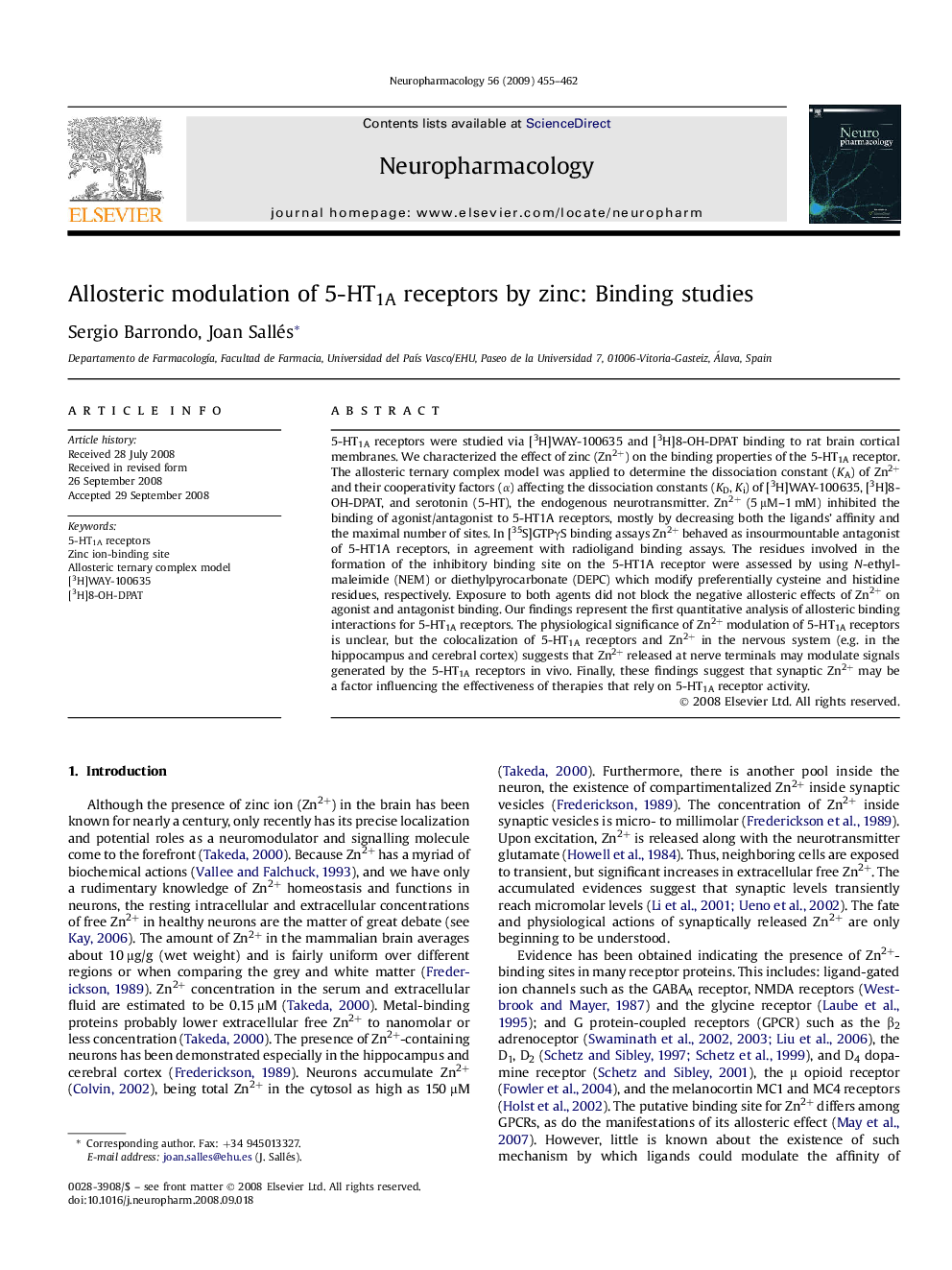| Article ID | Journal | Published Year | Pages | File Type |
|---|---|---|---|---|
| 2494260 | Neuropharmacology | 2009 | 8 Pages |
5-HT1A receptors were studied via [3H]WAY-100635 and [3H]8-OH-DPAT binding to rat brain cortical membranes. We characterized the effect of zinc (Zn2+) on the binding properties of the 5-HT1A receptor. The allosteric ternary complex model was applied to determine the dissociation constant (KA) of Zn2+ and their cooperativity factors (α) affecting the dissociation constants (KD, Ki) of [3H]WAY-100635, [3H]8-OH-DPAT, and serotonin (5-HT), the endogenous neurotransmitter. Zn2+ (5 μM–1 mM) inhibited the binding of agonist/antagonist to 5-HT1A receptors, mostly by decreasing both the ligands' affinity and the maximal number of sites. In [35S]GTPγS binding assays Zn2+ behaved as insourmountable antagonist of 5-HT1A receptors, in agreement with radioligand binding assays. The residues involved in the formation of the inhibitory binding site on the 5-HT1A receptor were assessed by using N-ethyl-maleimide (NEM) or diethylpyrocarbonate (DEPC) which modify preferentially cysteine and histidine residues, respectively. Exposure to both agents did not block the negative allosteric effects of Zn2+ on agonist and antagonist binding. Our findings represent the first quantitative analysis of allosteric binding interactions for 5-HT1A receptors. The physiological significance of Zn2+ modulation of 5-HT1A receptors is unclear, but the colocalization of 5-HT1A receptors and Zn2+ in the nervous system (e.g. in the hippocampus and cerebral cortex) suggests that Zn2+ released at nerve terminals may modulate signals generated by the 5-HT1A receptors in vivo. Finally, these findings suggest that synaptic Zn2+ may be a factor influencing the effectiveness of therapies that rely on 5-HT1A receptor activity.
